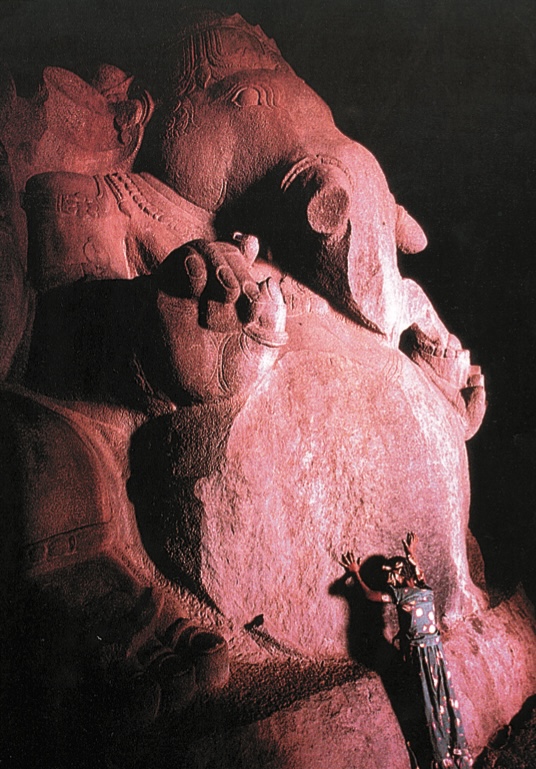By Tara Katir
For thousands of years man has been fascinated with elephants. We revere them for their majesty, strength and dexterity and for their humanlike emotions and behavior. Hindus hold a special reverence for elephants. Every day elephants bless thousands of Hindu devotees at temples all over India. And Ganesha, our most popular Hindu God, has an elephant head.
Anyone who loves elephants will enjoy a detailed, picture-packed look at their biological and cultural impact on humanity in Elephants: A Cultural and Natural History by Karl Groning and Martin Saller (482 pages, Konemann publishers, Germany, 1998, us$39.95). Groning and Saller’s encyclopedic work covers everything you would ever want to know about these noble mammoths.
While over 300 proboscidean species have trod the planet, only two exist today–the African and Asian elephants–both endangered by human encroachment and poaching for their ivory tusks. Groning and Saller trace the elephant’s natural history as well as a detailed discussion of elephant anatomy and their amazingly versatile body, especially their hand-nose-radar trunk and their majestic enlarged incisor teeth, or tusks, which they use as tools.
Around 3,500 bce in the Indus River Civilization, elephants gained a central place in human life. “At that time, humans and animals lived in close partnership, and the creatures had their place in the natural religions and fertility cults, honored as sacred beings and mystical symbols,” writes Groning and Saller. “The same was true on the Nile and the Euphrates, and China’s Yellow River. The gray giant was tamed, trained, but never domesticated by selective breeding. It remained a wild animal, even in captivity, even into our own times.”
An entire chapter is devoted to the elephant’s special place within Hindu and Buddhist life. “In no other country has the elephant been so integrated into everyday life, the world of work, the splendor of festivities and myths of religious cults as in India,” writes Groning and Saller. “Indians consider the elephant to be the most intelligent of all the animals, so it was not by chance that the protector of wisdom, erudition and well-being should have the head of a clever elephant on his shoulders: that of the popular, corpulent Ganesha.”
If you enjoy gazing at these powerful giants, this marvelous book with stunning photographs adorning every page won’t be disappointing. Ranging from wildlife photos to beautiful art from around the world, the photos are a feast for the eyes. It constitutes hours worth of enjoyment and weighs in at an elephantine 5.3 pounds.
